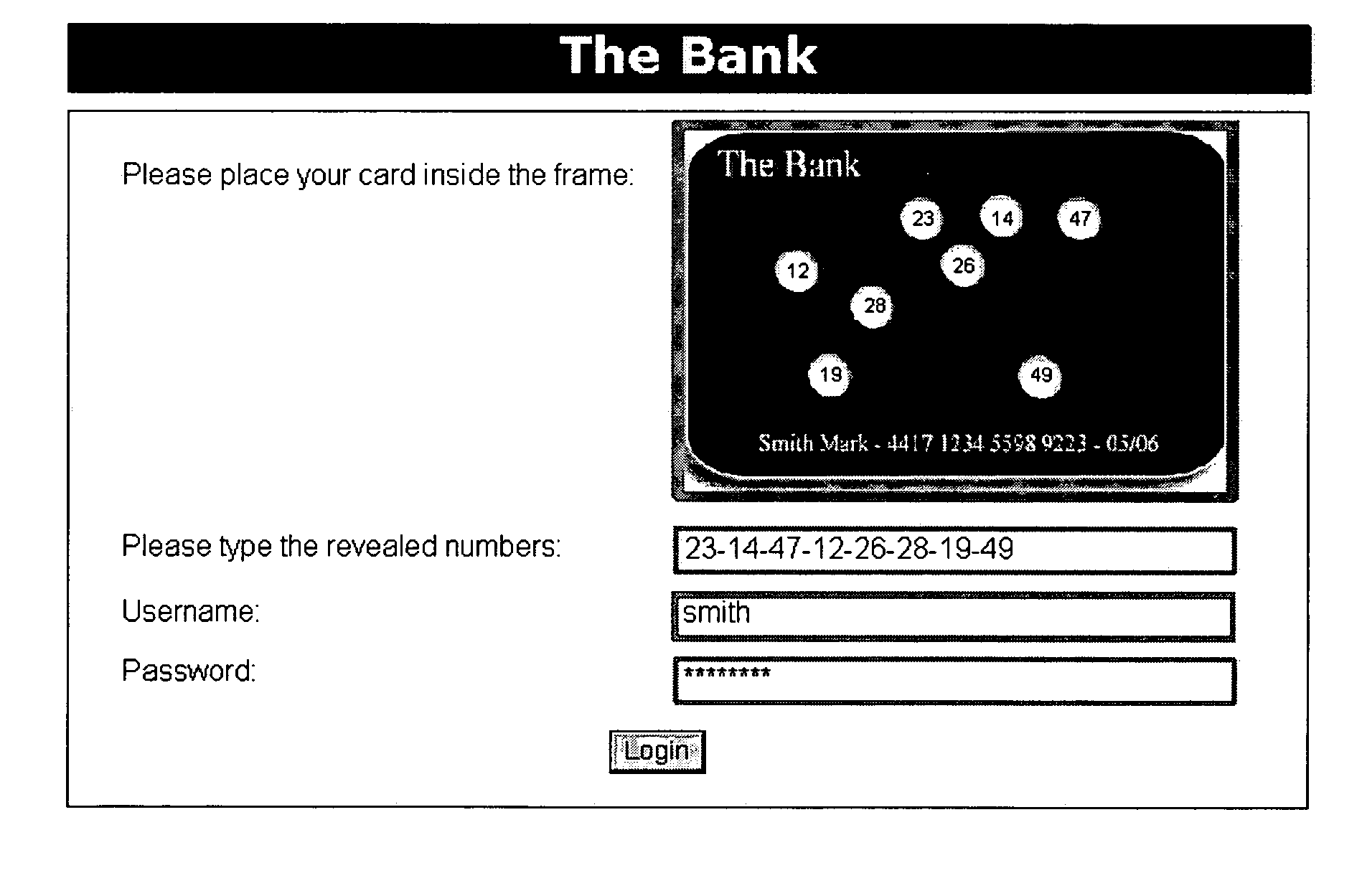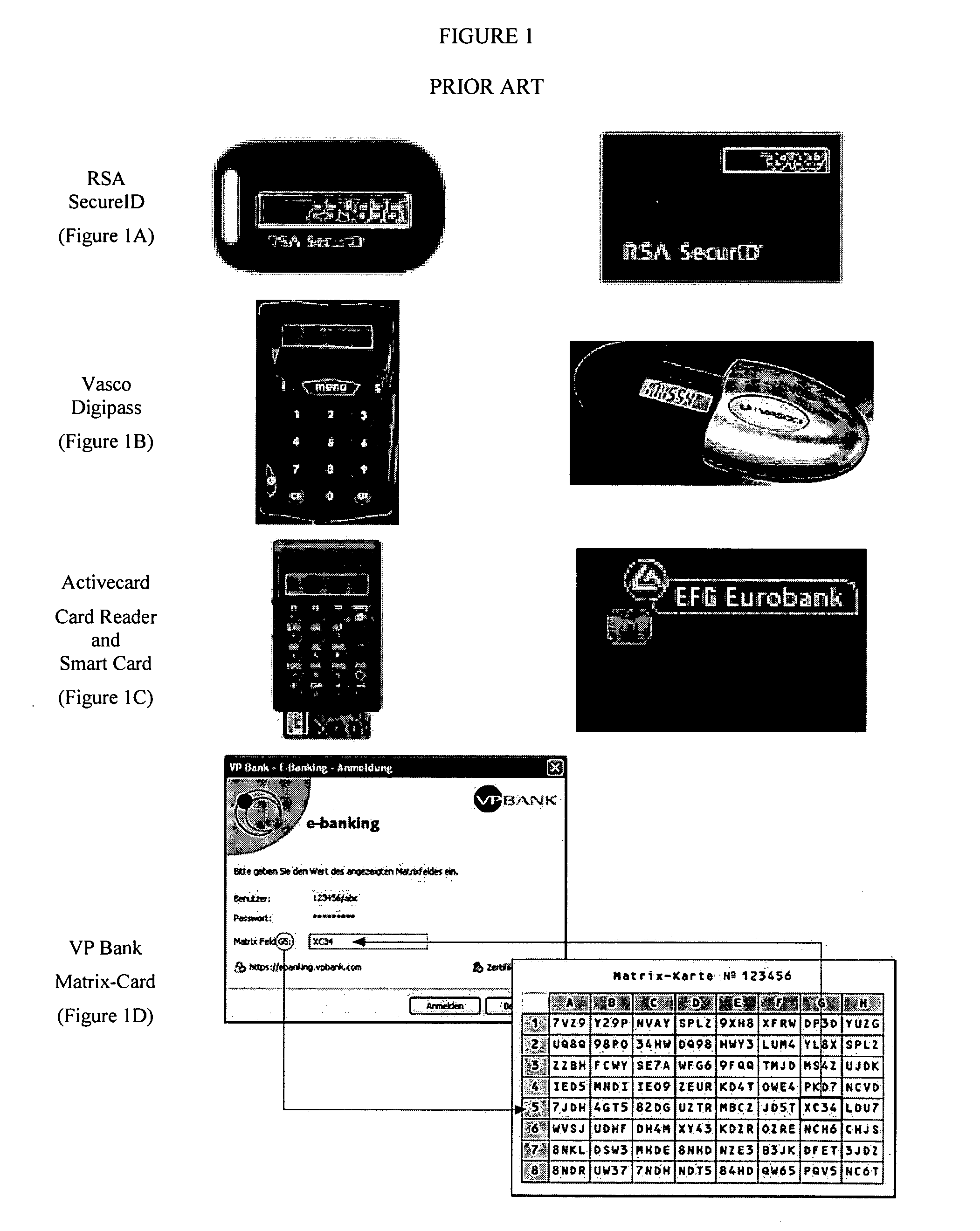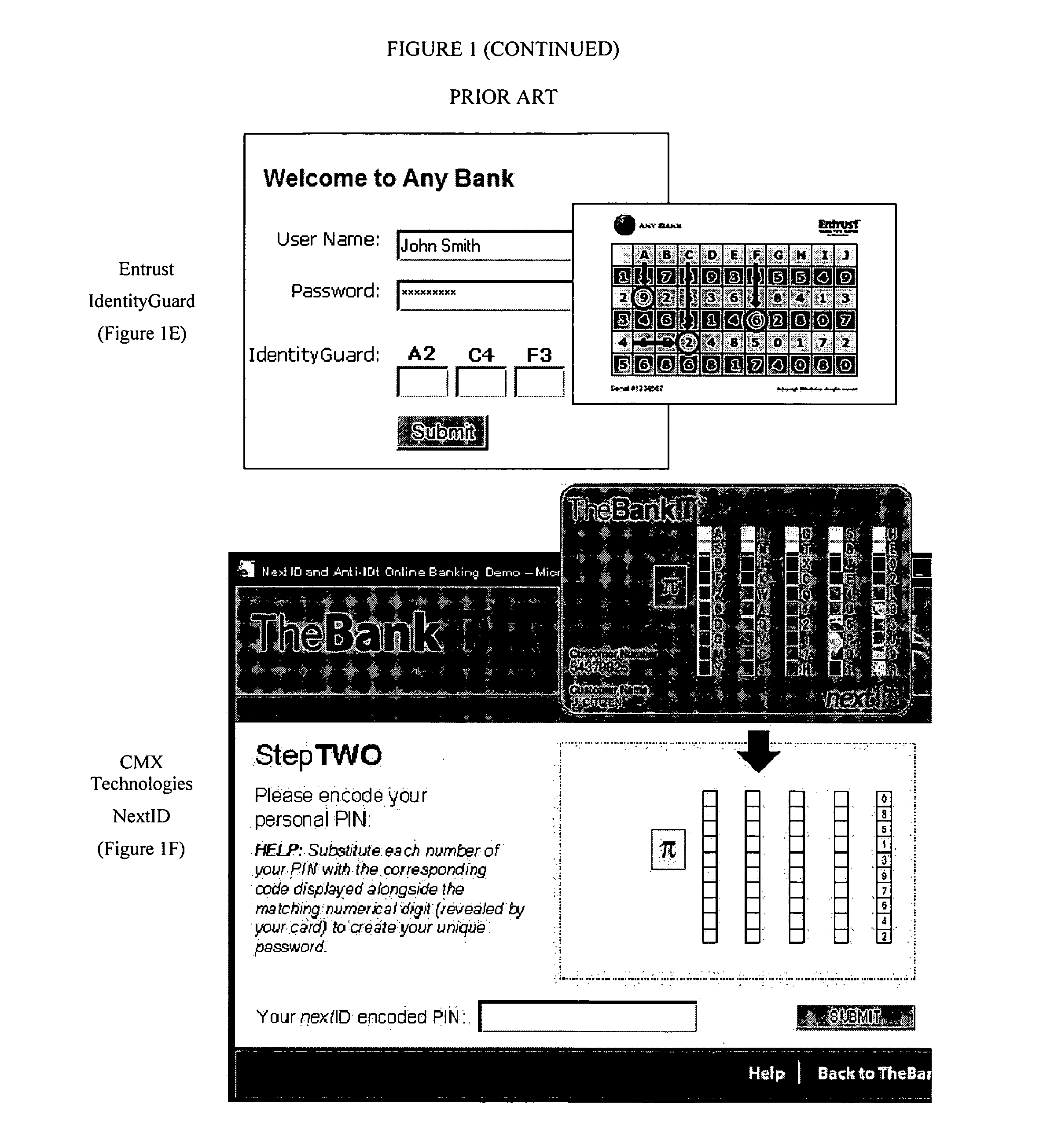System for authentication and identification for computerized and networked systems
a networked system and authentication technology, applied in the field of authentication systems, can solve the problems of identity theft becoming one of the biggest problems of society, enormous potential risk of fraud, and organizations like these losing enormous amounts of money and time, and achieve the effect of maximizing internet and network security
- Summary
- Abstract
- Description
- Claims
- Application Information
AI Technical Summary
Benefits of technology
Problems solved by technology
Method used
Image
Examples
first embodiment
[0144] In a first embodiment, the order of entry of the characters of the OTP is NOT required, and the user may enter the revealed vectors in whatever order desired. In this case, the number of combinations available for choosing K objects out of N objects is represented by the following formula, where the variable N stands for the number of cells in the matrix, and the variable K stands for the length of the key-sequence (the number of vectors): C(n,k)=N!(k!*(n-k)!)
[0145] Every vector in the key-sequence represents a physical, two-dimensional (x,y) location on the card. Thus, in this embodiment where entry of a specific selection order is not required, for the key-sequence 1-2-3-4-5-6-7-8, for example, the locations of cell numbers 1 through 8 (all eight cells) would be punched / printed on the card. In the same manner, the key-sequence 2-5-1-8-6-3-7-4 would result in a card with the same physical appearance, because every vector represents the same physical location on the card (i...
second embodiment
[0159] One way to further strengthen the OTP is the second embodiment, wherein a specific order of entry of the OTP characters IS required, i.e., that the server requires the user to enter the characters in a particular order in order for the OTP to be accepted as valid. In this second situation, where the selection order of the key-sequence vectors entered by the user as the OTP IS important, the number of permutations available for choosing K objects out of N objects is represented by the following formula, where the variable N stands for the number of cells in the matrix, and the variable K stands for the length of the key-sequence (number of vectors): C(n,k)=n!((n-k)!)
When compared to the formula set forth previously for the number of combinations when the selection order is not important, in this formula the value K! does not appear in the denominator. Therefore, in pragmatic terms, adding the dimension of the order multiplies the number of possible combinations of character...
PUM
 Login to View More
Login to View More Abstract
Description
Claims
Application Information
 Login to View More
Login to View More - R&D
- Intellectual Property
- Life Sciences
- Materials
- Tech Scout
- Unparalleled Data Quality
- Higher Quality Content
- 60% Fewer Hallucinations
Browse by: Latest US Patents, China's latest patents, Technical Efficacy Thesaurus, Application Domain, Technology Topic, Popular Technical Reports.
© 2025 PatSnap. All rights reserved.Legal|Privacy policy|Modern Slavery Act Transparency Statement|Sitemap|About US| Contact US: help@patsnap.com



